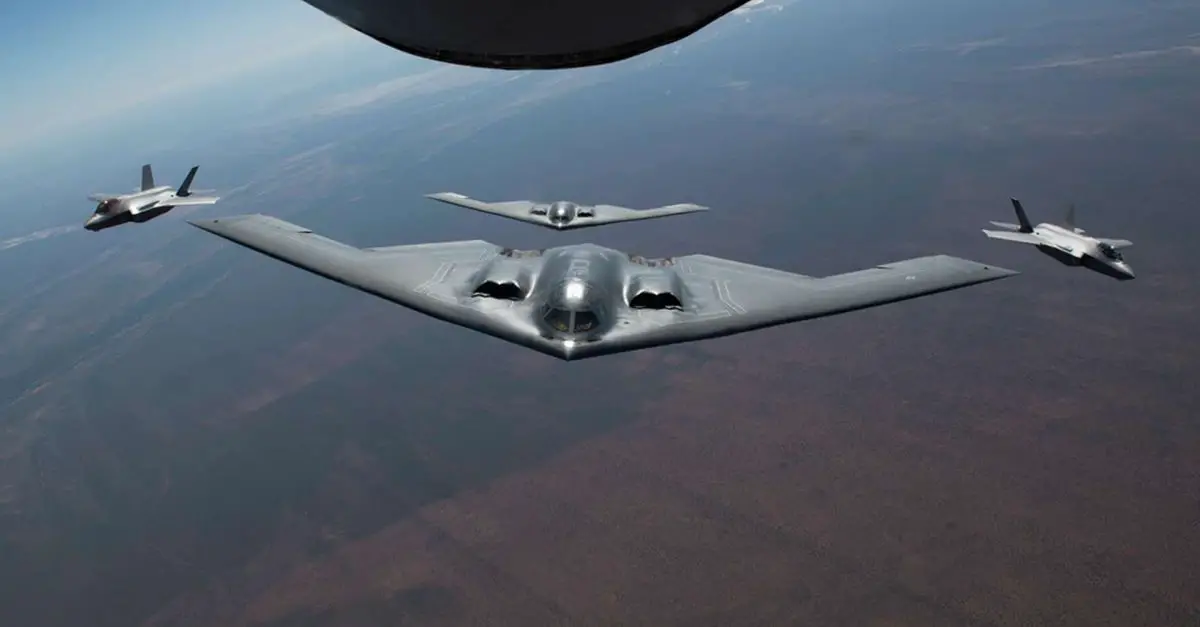Breaking news
US Air Force awards $7 Billion contract to Northrop Grumman for B-2 Spirit Stealth Bomber upgrades.
On May 3, 2024, Northrop Grumman secured a substantial indefinite-delivery/indefinite-quantity contract from the US Air Force valued at up to $7 billion to modernize and sustain the B-2 Stealth Bomber, known for its pivotal role in strategic bombing. The enhancements outlined in the contract cover a broad spectrum of needs, including advanced sustaining engineering, software maintenance, support equipment, and the programmed depot maintenance of the fleet.
Follow Army Recognition on Google News at this link

The B-2 program was initially ambitious, planning for 132 bombers, but this number was reduced to 21 due to budget reductions and the geopolitical landscape post-Cold War. (Picture source: US DoD)
The Northrop Grumman B-2 Spirit, also known as the Stealth Bomber, is a significant piece of American aerospace engineering developed primarily for strategic bombing capabilities. The development of the B-2 commenced in the late 1970s as a response to the improving capabilities of Soviet air defenses, which necessitated a bomber with advanced stealth features. Northrop Corporation was awarded the development contract by the U.S. Air Force in 1981, and the project remained highly classified throughout its development stages. The first B-2 was unveiled in 1988 and entered service in 1997. The development phase focused on incorporating stealth technology and materials, using extensive composite materials to decrease the aircraft's radar cross-section.
The B-2 program was initially ambitious, planning for 132 bombers, but this number was reduced to 21 due to budget reductions and the shifting geopolitical landscape post-Cold War. The costs associated with the B-2 were significant, reflecting the advanced technology and capabilities it brought, including long-range operations, a large payload capacity, and reduced radar detectability, which allowed for strategic operations without reliance on proximate bases.
The stealth characteristics of the B-2 Spirit are primarily due to its flying-wing design, which reduces the number of radar-reflective edges. The aircraft's surface materials and special coatings are designed to absorb radar waves, enhancing its ability to evade detection. This stealth capability enables the B-2 to penetrate sophisticated air defenses and execute strikes with reduced likelihood of interception. The B-2’s operational efficacy in stealth mode was validated in combat operations across Kosovo, Iraq, and Afghanistan, where it carried out precision strikes.
Regarding modernization, the B-2 is part of ongoing upgrade programs to address emerging threats. These include updates to its defensive systems to better identify and counteract air defense systems and the integration of upgraded nuclear weapons, such as the B61-12 bombs. Additional modernizations focus on securing communication systems against cyber threats and advancing the aircraft’s stealth technology to remain effective against new detection technologies.
The B-2 fleet, part of the U.S. nuclear triad and conventional strike forces, is based at Whiteman Air Force Base in Missouri and operated by the 509th Bomb Wing. Its role in strategic deterrence and readiness for rapid global deployment highlights its importance in national security frameworks, with specifics on deployment strategies and operational readiness generally classified.
Technically, the B-2 Spirit can cover a range of approximately 6,900 miles unrefueled, with the potential for indefinite range extension via in-flight refueling. Its maximum speed is near subsonic at 0.95 Mach, with an operational ceiling of 50,000 feet. The aircraft can carry up to 40,000 pounds of both conventional and nuclear ordnance. It is equipped with state-of-the-art avionics and navigation systems that support its role in executing precision-guided munitions and varied mission profiles.


























